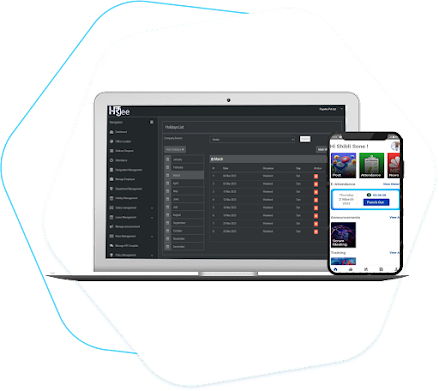Unlocking Efficiency and Productivity: The Power of Automated Human Resources Systems
In today's fast-paced business landscape, organizations are continually seeking innovative ways to streamline their operations and maximize productivity. One area where significant advancements have been made is in human resources management. Traditionally, HR tasks were manual, time-consuming, and prone to errors. However, with the advent of automated human resources systems, businesses are experiencing a paradigm shift in how they manage their workforce.
Automated human resources systems, also known as HRIS (Human Resources Information Systems) or HRMS (Human Resources Management Systems), encompass a wide range of software solutions designed to automate and streamline HR processes. From recruitment and onboarding to payroll and performance management, these systems offer a comprehensive suite of tools to handle all aspects of human capital management.
One of the most significant benefits of automated HR systems is the efficiency they bring to everyday HR tasks. Manual processes, such as paper-based timesheets and manual payroll calculations, are replaced with automated workflows and digital tools. This not only saves time but also reduces the likelihood of errors, ensuring accurate and reliable data management.
Recruitment and onboarding are two areas where automated HR systems can make a substantial impact. With applicant tracking systems (ATS), HR professionals can efficiently manage the entire recruitment process, from posting job openings to screening resumes and scheduling interviews. Automated onboarding workflows streamline the new hire process, guiding employees through necessary paperwork, training modules, and orientation activities.
Once employees are onboarded, automated HR systems continue to play a crucial role in managing their lifecycle within the organization. Performance management modules enable HR professionals to set goals, track progress, and conduct performance reviews in a systematic and standardized manner. Employee self-service portals empower employees to access their personal information, submit time-off requests, and update their profiles, reducing administrative overhead for HR staff.
Payroll processing is another area where automated HR systems shine. Advanced payroll software automates the entire payroll process, from calculating salaries and deductions to generating pay stubs and tax forms. By integrating with time and attendance systems, payroll software ensures accurate and efficient processing of employee hours, minimizing payroll errors and discrepancies.
Compliance with labor laws and regulations is a critical concern for businesses of all sizes. Automated HR systems help organizations stay compliant by automating compliance tasks, such as tracking employee certifications and licenses, managing FMLA (Family and Medical Leave Act) requests, and generating compliance reports. Additionally, many HR systems offer built-in compliance features and updates to ensure adherence to changing regulations.
In addition to efficiency gains and compliance benefits, automated HR systems provide valuable insights into workforce data and analytics. With robust reporting and analytics tools, HR professionals can analyze trends, identify areas for improvement, and make data-driven decisions to optimize workforce performance and productivity. Whether it's tracking turnover rates, analyzing employee engagement survey results, or forecasting staffing needs, HR analytics empower organizations to better understand their workforce and drive strategic initiatives.
The benefits of automated HR systems extend beyond HR departments to impact the entire organization. By streamlining HR processes and reducing administrative burden, employees can focus more on their core responsibilities and strategic initiatives. This leads to increased productivity, higher job satisfaction, and ultimately, better business outcomes.
Furthermore, automated HR systems promote transparency and collaboration within the organization. By providing employees with access to self-service portals and centralized communication channels, organizations can foster a culture of openness and inclusivity. Employees feel empowered to manage their own information and communicate with HR and management, leading to improved employee engagement and retention.
As technology continues to evolve, so too will automated HR systems. Artificial intelligence (AI) and machine learning (ML) are revolutionizing HR processes, enabling predictive analytics, personalized learning experiences, and even virtual HR assistants. These advancements promise to further enhance the efficiency and effectiveness of HR operations, driving organizational success in the digital age.
In conclusion, automated human resources systems are a game-changer for organizations looking to unlock efficiency, productivity, and agility in managing their workforce. By automating repetitive tasks, ensuring compliance, providing valuable insights, and fostering transparency and collaboration, these systems empower HR professionals to focus on strategic initiatives and drive business success. As businesses continue to adapt to the evolving landscape, investing in automated HR systems will undoubtedly be a key differentiator in achieving competitive advantage and sustainable growth.


Comments
Post a Comment